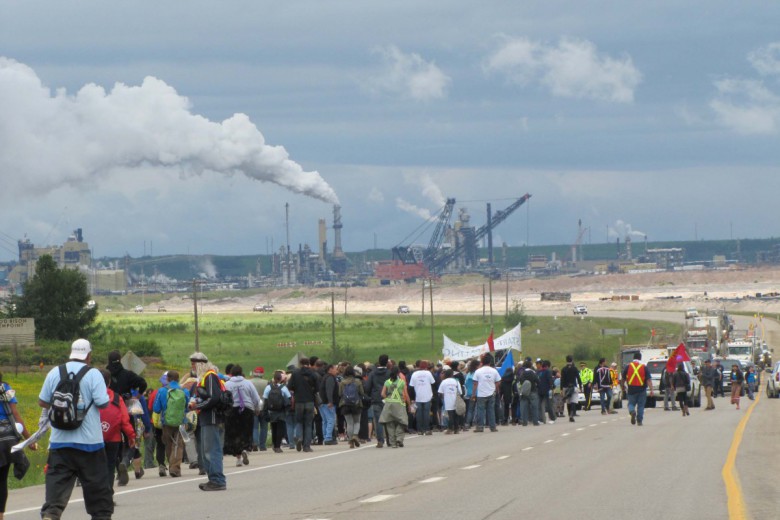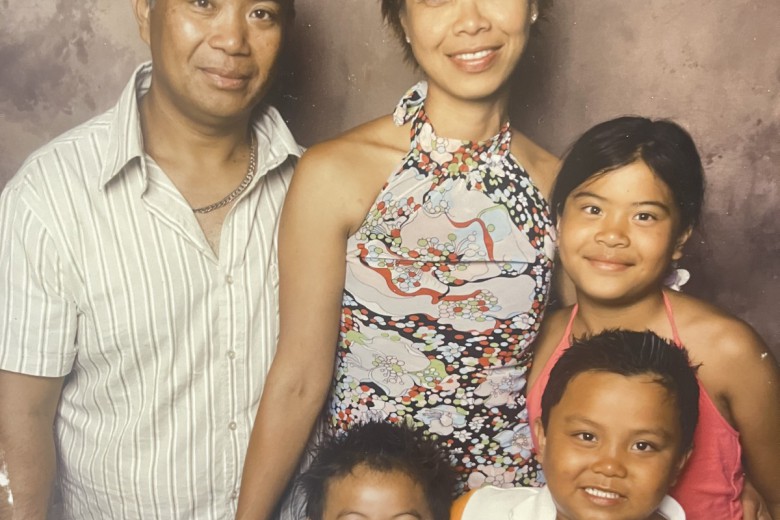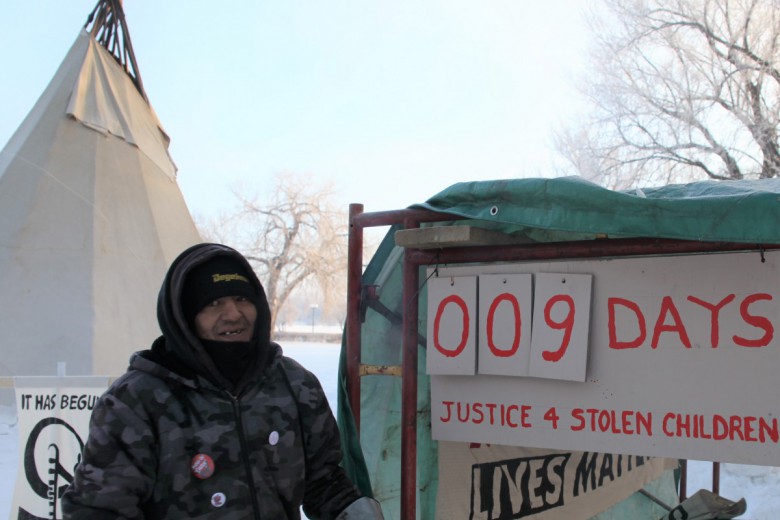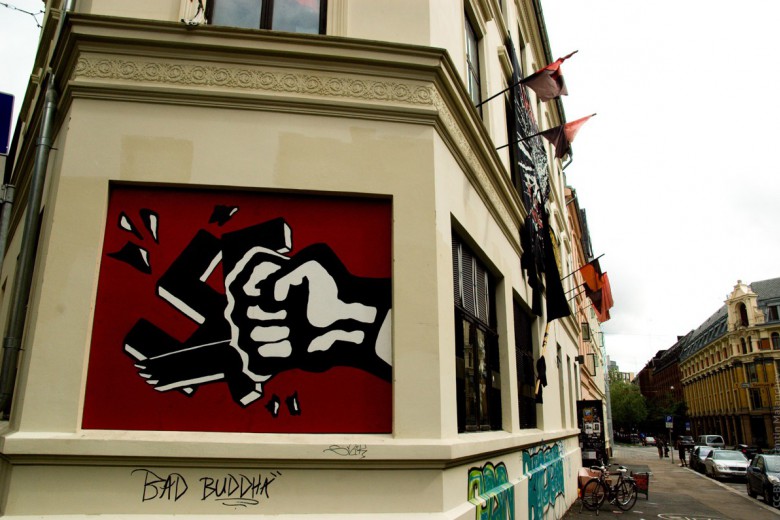_1000_972_90.jpg)
The Conservatives won a majority in the recent federal election with a very simple core message. On the basis of their economic agenda and tough-on-crime program, Stephen Harper presented his party as the safe choice in difficult times. While the Conservative campaign was sophisticated in targeting specific messages to a range of particular communities, the central theme was straightforward, and was repeated in Prime Minister Stephen Harper’s election-night victory speech: A majority government would make it possible to “turn the page on the uncertainties and repeat elections of the past seven years.” To this end, Harper promised to move decisively to “create jobs and growth without raising your taxes,” and to implement “comprehensive measures to reduce crime and make our streets and neighbourhoods safer.”
At times, the Conservative campaign sounded a lot like a seance, with Stephen Harper as a medium channeling the spirit of the economy. Through Harper, the economy told us that it was jittery these days and needed a majority government and tax cuts to restore its confidence. Immediately after the defeat of his previous minority government, Harper described this as an election “the economy doesn’t need.” Stability, rather than elections, was required in turbulent times. “Today the world economy remains fragile. The risk of a new international debt crisis is still with us,” Harper commented.
The Conservative campaign was rooted in 35 years of political and economic restructuring through neo-liberalism, a strategy for corporate profitability focused on pushing the market deeper into every aspect of life, leaving us with no alternative but to purchase an ever-expanding range of goods and services to meet our needs and wants. This deepening of market forces has been accomplished primarily by cutting social programs and benefits, while also undercutting worker bargaining rights over wages and conditions of work.
A key goal of this restructuring process has been to depoliticize politics, to suggest that sound government is simply a technical matter of making the correct decisions to nurture economic growth. In the English-language leaders’ debate, Harper asked viewers: “Do you want to have this kind of bickering, do you want to have another election in two years? Or do you want a focus on the economy?” Politics, for Harper, is really just chatter that distracts from the only real job of government, which is nurturing a profitable economy.
The extent to which politics had already been narrowed long before this election was clear in the limits of public debate during the campaign. In the weeks running up to May 2, we heard virtually nothing from any of the major parties about how to address housing needs, racist immigration policies, Indigenous issues, foreign policy and Canadian imperialism, or racial profiling and the criminalization of the poor.
As those of us on the left regain our footing after being knocked over by the Conservative win, we need to be asking ourselves what the exclusion of these and other crucial issues from the sphere of legitimate political debate tells us about the state of radical movements. We need to engage in ongoing discussions about what would have to happen in order to build a large, pluralist left with the necessary social weight to intervene in mainstream politics and to expand the horizons of possibility and hope.
Viewed from this angle, the election reminds us that the Harper majority has not fundamentally altered the challenge and importance of building movements that can shape political agendas, make demands, win concessions, and ultimately transform society. Regardless of which party is elected, those of us committed to building a left with real social weight must orient our work towards both building militant movements and seeking out every opportunity we can to engage with wider layers of the population. Activism should not be counter-posed to parliamentary politics, but it shouldn’t be determined by it either. For this reason, as we go about the task of deepening our own analyses, co-ordinating effective fight-backs, and reaching out to yet-to-be-radicals, it helps to reflect upon the challenges and opportunities provided by the election results.
Harper’s Austerity Agenda
It is clear that Harper will use his majority to advance the austerity agenda in Canada full-scale, slashing public services and attacking the employment conditions of public sector employees. The financial meltdown in 2008 dramatically increased public debt around the globe, as governments stepped in to keep companies from going under by taking on their bad debts. Governments of every political stripe are currently presenting deep cuts as the only way of addressing this level of public debt, given ongoing commitments to tax cuts (especially for corporations and the rich) and to spending on state security (military, policing, prison expansion and anti-immigrant border controls).
The austerity agenda has swept across Europe, the United States and through much of the global south. Public services are being gutted by massive program cuts and whopping increases in user fees. At the same time, public sector workers are being targeted. Their collective bargaining rights are being legislated away, and they are being asked to accept sharp cuts in wages and working conditions on top of huge lay-offs.
Employers want to destroy the model of the “good” working class job – one with decent pay, benefits and security. Having largely shut out such jobs from the private sector over the last 35 years, they now plan to lay waste to public sector wages and working conditions. Indeed, by the time this article goes to press, this offensive will likely have begun with a serious attack on Canada Post that will dramatically increase the workload of postal workers while introducing two-tier contracts that will give new employees lower wages, reduced benefits and less job security.
Resistance and the “Orange Wave”
The brutal reality of this program is likely to summon up some resistance. Certainly this has been true elsewhere, be it Britain’s militant student demonstrations in November 2010, or the 500,000-strong anti-cuts march on March 26; mass political strikes by public sector workers in Wisconsin; or the huge street protests and one-day general strikes in France and Greece. Yet these protests have come up against highly determined governments who have not yet backed off their agendas.
It’s through the lens of potential resistance that we approach the other important feature of the recent election: that is, the sudden surge of the New Democratic Party. Compared to the 2008 election, the NDP increased its popular vote from 18.18 per cent to 30.63 per cent, and the number of seats it holds in Parliament from 37 to 103. For the first time in Canada’s history, a social democratic party will form the Official Opposition at the federal level.
Many progressives across Canada are celebrating the NDP’s success. They argue that the party campaigned on a platform of change, and therefore the rise in NDP support is a clear message that many reject the Harper agenda. There is something to this argument. During the campaign, NDP Leader Jack Layton represented his party as a real alternative to the Liberals and Conservatives. He criticized the government for focusing “on the priorities of the well-connected, not the priorities of your family,” and announced that “together, we can change Ottawa.” His election opponents accused the NDP of trying “to move the country to the left” (Ignatieff) and “promising the moon” (Harper) without the expertise or know-how to deliver good government.
The idea that the NDP surge indicated support for a different agenda is supported by the fact that the Orange Wave started in Quebec, where the party’s huge electoral gains were ultimately centred. The battle against the austerity agenda has been stronger in Quebec than elsewhere, as evidenced by the 55,000-strong march against the Charest government’s austerity agenda on March 12. It is reasonable to presume that there is some connection between NDP support and the rising anti-austerity movement in Quebec.
Further, the NDP has elected some new members with important experiences in Indigenous leadership and activism. (For example, Cree leader Roméo Saganash will represent the northern Quebec riding of Abitibi-Baie-James-Nunavok-Eeyou from the NDP benches, and Jonathan Genest-Jourdain is now an Innu NDP MP representing the Quebec riding of Manicouagan.) Many NDP MPs have strong connections to unions, and the party as a whole has official ties to the trade union movement. At a time when public sector workers will be under attack, the NDP’s unique relationship with labour and community activists means that it will be under some pressure to distinguish itself from the austerity consensus.
At the same time, it is clear the NDP did not run on an anti-austerity program in this election. In fact, the NDP platform was not very different from Harper’s. It was one of the most conservative programs the NDP has ever run on – one that committed the party to a neo-liberal conception of responsible administration in which good government is defined as balanced budgets and low taxes. True, the NDP offered some minor policy variations, such as promises of modest rollbacks in corporate tax cuts. Overall, however, the NDP at the federal and provincial level in Canada has been every bit as neo-liberal as the other parties.
The track records of provincial NDP governments in Manitoba and Nova Scotia, both of which have balanced budgets through government cutbacks, are instructive. Yet, during the campaign, Layton held these NDP governments up as ideal models for the federal party. It is also worth remembering that in 1995, the NDP government in British Columbia supported the brutal RCMP assault on Indigenous protesters at Gustafsen Lake – the largest paramilitary operation in Canadian history, in which 77,000 rounds of ammunition were fired by the police over the course of the 31-day standoff – on the grounds that it was a criminal matter and therefore did not warrant political negotiations.
In light of the NDP’s tepid platform and unwillingness to differentiate itself from other parties in any significant way, the idea of putting all the opposition eggs in the NDP basket seems pretty weak. The fact that the new Official Opposition is facing a Conservative majority government makes hope in the NDP even less realistic. Further, even if the NDP had somehow won this election, we would likely still be facing some variation of the same austerity agenda. The real challenge, therefore, will be to organize in new ways in our workplaces, schools, neighbourhoods and streets to resist the austerity offensive, drawing on a wide range of forms of activism, including our capacity to grind things to a halt through strikes and occupations.
The NDP surge adds a new wrinkle to this challenge, showing that there are layers of the population who took a step towards resisting the Harper agenda on election-day. The next wave of mobilizations need to find creative ways to build strategic spaces that invite at least some of these NDP voters into activism.
Of course, it is not easy to build the kind of strategic spaces strong enough to support meaningful political debate and to democratically plan actions. There are political differences that divide individuals and groups, and the difficulty of contending personalities is no small thing. The radical left is not free from the systems of inequality that structure society, and building a left with social weight means addressing privilege and exclusion head on within our movements. Doing so is often a source of deep pain – but it’s nonetheless essential. The challenge of all this is monumental. But, to refuse to take it up is to admit defeat.
Regardless of the outstanding work of existing radical groups and the potential openings presented by the NDP surge, neither small layers of determined activists nor a suddenly-larger social democratic party alone is capable of transforming society as a whole. That will only happen when masses of people collectively recognize the injustices of the present system, and through their own hands, work to bring about a better world. This process requires a large – and growing – pluralist left that looks out beyond its borders.






